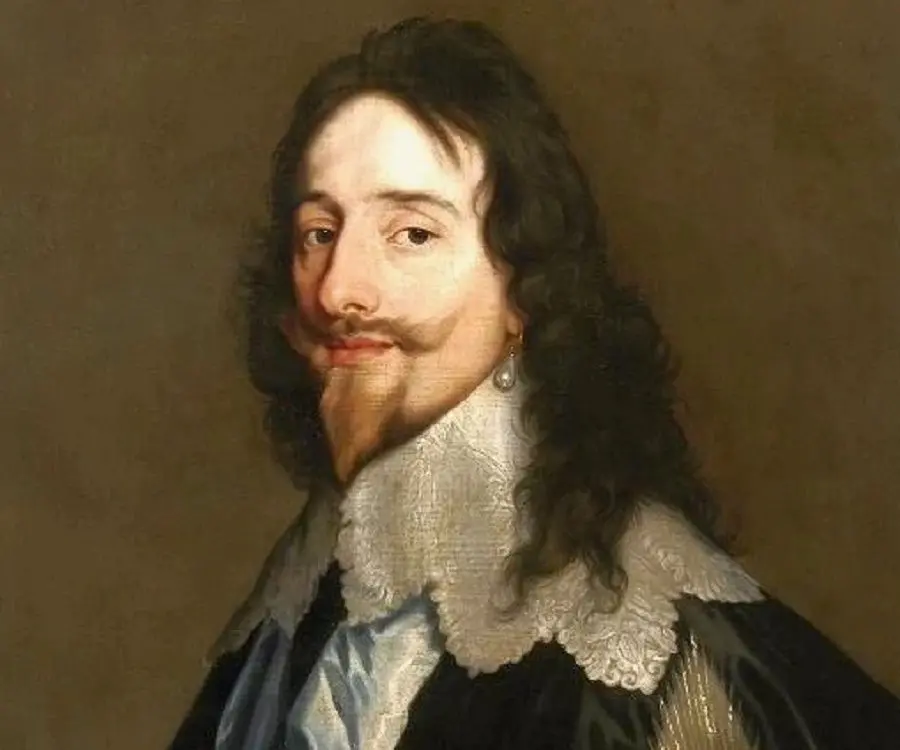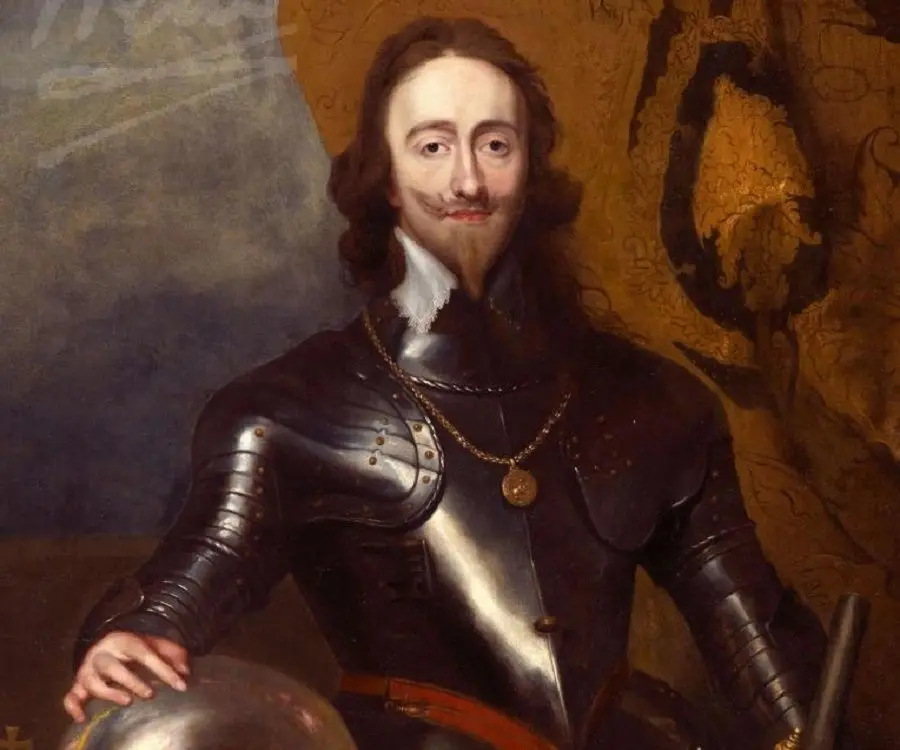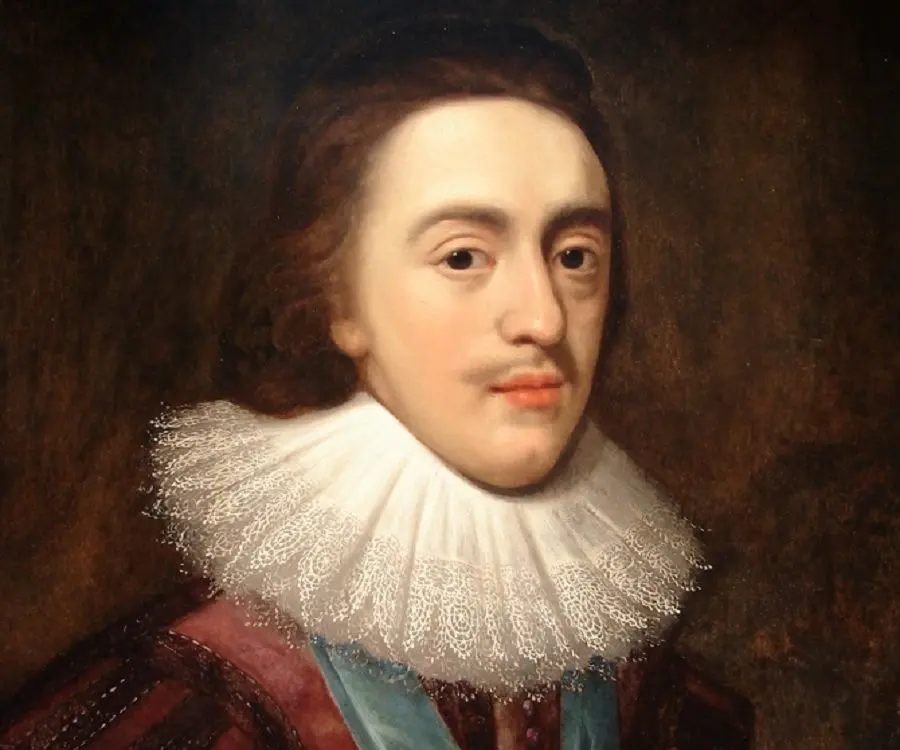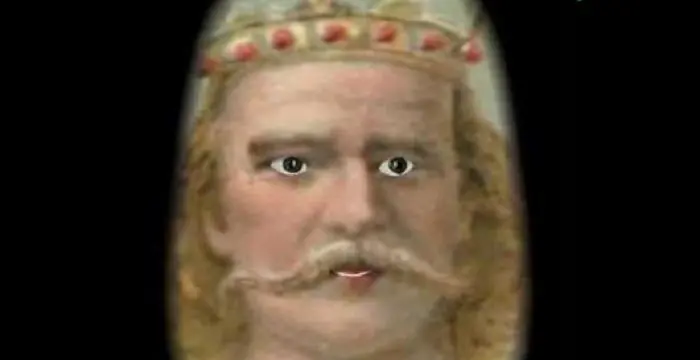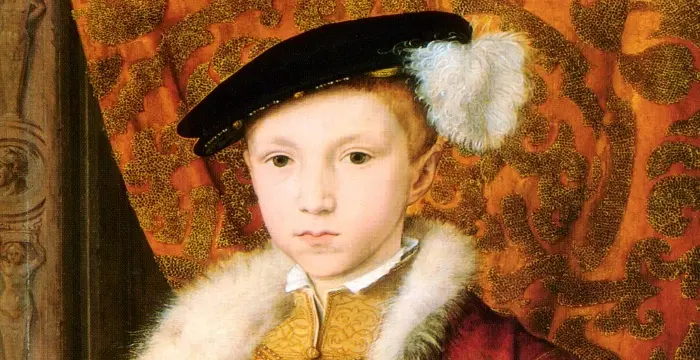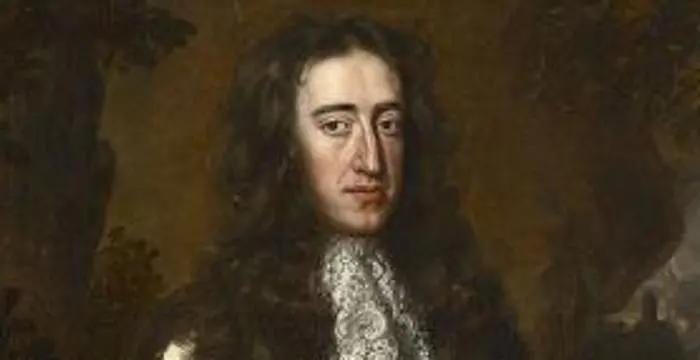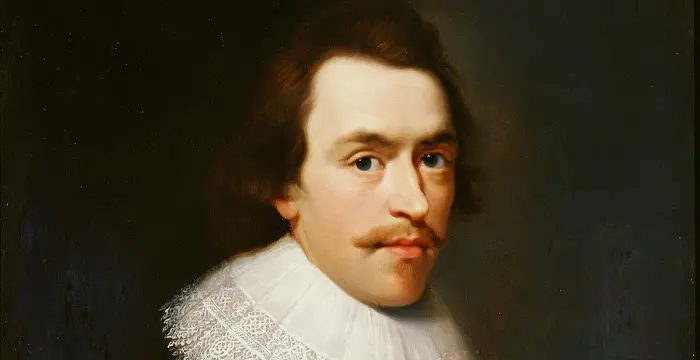
Charles I of England - Emperors, Family and Family
Charles I of England's Personal Details
Charles I of England was the king of England, Scotland and Ireland from 1625 to 1649
| Information | Detail |
|---|---|
| Birthday | November 19, 1600 |
| Died on | January 30, 1649 |
| Nationality | British |
| Famous | Historical Personalities, Emperors & Kings, Emperors, King of England, Kings |
| Spouses | Henrietta Maria of France |
| Siblings | Duke of Kintyre and Lorne, Elizabeth Stuart, Henry Frederick, Prince of Wales, Queen of Bohemia, Robert Stuart |
| Known as | Charles I, Charles |
| Childrens | James II of England |
| Birth Place | Dunfermline Palace |
| Religion | Protestantism, Anglicanism |
| Gender | Male |
| Father | James VI and I |
| Mother | Anne of Denmark |
| Sun Sign | Scorpio |
| Born in | Dunfermline Palace |
| Famous as | King of England, Scotland and Ireland |
| Died at Age | 48 |
// Famous Kings
Sundiata Keita
Sundiata Keita was the founder of the Mali Empire in West Africa. This biography profiles his childhood, early life, struggles, founding of empire, rule, administration, achievements and also gives some fun facts.
Ashoka
Ashoka was the third emperor of the Mauryan Dynasty and ruled almost the entire Indian subcontinent. This biography profiles his childhood, life, reign, achievements and timeline
Murad IV
Murad IV was one of the mighty Sultans in the history of the Ottoman Empire. This biography profiles his childhood, family, accession, rule, administration and timeline.
Charles I of England's photo
Who is Charles I of England?
Charles I of England was the king of England, Scotland and Ireland from 1625 to 1649. He was an authoritarian who believed in the divine right of kings and desired to govern his territories according to his own rules and regulations. He had no regard for the views and opinions of his subjects who began to loathe him for his autocracy and dictatorship. He was also a very religious man who supported high church ecclesiastics and thus earned the mistrust of reformed groups such as the Puritans and Calvinists. Charles was born as the second son of King James VI of Scotland, and since he had an elder brother, it was not expected that he would one day inherit the throne. However, the unfortunate and untimely death of his more popular elder brother meant that Charles became the heir apparent to succeed his father. Charles I was unpopular from the very beginning; he quarreled with the Parliament of England over several issues from the time of his succession. He attempted several times to dissolve the parliament and rule alone which further added to his unpopularity. His continued animosity with the parliament led to the English Civil War and his eventual execution. He was beheaded in January 1649.
// Famous Emperors
Sundiata Keita
Sundiata Keita was the founder of the Mali Empire in West Africa. This biography profiles his childhood, early life, struggles, founding of empire, rule, administration, achievements and also gives some fun facts.
Ashoka
Ashoka was the third emperor of the Mauryan Dynasty and ruled almost the entire Indian subcontinent. This biography profiles his childhood, life, reign, achievements and timeline
Murad IV
Murad IV was one of the mighty Sultans in the history of the Ottoman Empire. This biography profiles his childhood, family, accession, rule, administration and timeline.
Childhood & Early Life
Charles was born as the second son of King James VI of Scotland and Anne of Denmark on 19 November 1600. He was created Duke of Albany, the traditional title of the second son of the King of Scotland on 23 December 1600.
His father became the King of England in March 1603. His parents and older siblings left for England leaving behind Charles who was a sickly child as they feared that he might not survive the journey.
Charles left for England in mid-1604 when he was found to be strong enough for the journey. He would spend most of the rest of his life in England. In addition to being a weak child, he also developed a speech impediment.
In 1605, he was created Duke of York and made a Knight of the Bath.
He received his early education from Thomas Murray who taught him classics, languages, mathematics and religion.
As he grew up, Charles overcame some of his physical infirmities and became an adept horseman and marksman. He also loved hunting and fencing.
His elder brother Henry, who was the heir apparent and a much popular figure, died of an illness at the age of 18 in 1612. Charles, aged 12 at that time, became the heir apparent. He automatically gained several titles including Duke of Cornwall and Duke of Rothesay due to his newly gained status as the eldest surviving son of the sovereign.
Charles was created Prince of Wales and Earl of Chester in November 1616.
Accession & Reign
King James started suffered from ill health in 1624 and was growing progressively weaker. He became so ill that he was not even able to control the Parliament properly. Eventually Charles, being the heir apparent, began taking up more responsibility in the governance.
The king died in March 1625 and Charles became the king. At the time of his succession he had a close friendship with George Villiers, Duke of Buckingham, who was a notorious figure in the English court.
Charles I proved to be an unpopular ruler from the very beginning. The initial years of his reign were marked by political turbulence and conflicts with the parliament. He engaged in wars with France and Spain at the same time and this kindled a general dislike for him in the minds of the citizens.
He was an authoritarian who believed in the absolute powers of the monarch. He dissolved the parliament three times between 1625 and 1629. After dismissing the parliament in 1629, he resolved to rule alone and because of this he had to raise revenue by non-parliamentary means which added to his notoriety.
Over the 1630s he primarily raised revenue from measures such as impositions, forced loans, wardship, ship money, and exploitation of forest laws. However, he became involved in a war against Scotland in 1639 and the need for extensive funding forced him to summon a parliament in 1640 in order to obtain funds to fight the Scots.
The Irish uprising of October 1641 strained the relations between the king and the parliament leading to rising political tensions. Charles tried to get five members of parliament arrested and the escalating tensions culminated in the English Civil War in 1642 which was fought between supporters of King Charles I against the supporters of the Parliament.
The first English Civil War raged on from 1642 to 1646 while the second one took place from 1648-49. The king’s supporters were defeated in both the wars and the king was put on trial for treason following the conclusion of the second civil war, marking the downfall of Charles I of England.
Personal Life & Legacy
Charles I married French princess Henrietta Maria in 1625. The initial years of their marriage were fraught with quarrels and disagreements though their relationship improved over time. Eventually the couple formed a strong bond and had a happy married life. This marriage produced nine children.
Following the second English Civil War, Charles I was charged with high treason and “other high crimes against the realm of England.” He was put on trial, declared guilty and sentenced to death. He was beheaded on 30 January 1649 outside the Banqueting House on Whitehall, London.
// Famous King of England
Harold Godwinson
Harold Godwinson was an Anglo Saxon King of England in the 11th Century. Check out this biography to know about his birthday, childhood, family life, achievements and fun facts about him.
Edward VI of England
Edward VI served as the King of England, from 1547 until his death in 1553. Check out this biography to learn in details about his life, his works as a king and timeline
William III of England
William III was the stadtholder of the main provinces of the Dutch Republic and the king of England, Ireland, and Scotland (King William II of Scotland). Check out this biography to know more about his childhood, family, life history, etc.
Charles I of England biography timelines
- // 23rd Dec 1600Charles was born as the second son of King James VI of Scotland and Anne of Denmark on 19 November 1600. He was created Duke of Albany, the traditional title of the second son of the King of Scotland on 23 December 1600.
- // Mar 1603His father became the King of England in March 1603. His parents and older siblings left for England leaving behind Charles who was a sickly child as they feared that he might not survive the journey.
- // 1604Charles left for England in mid-1604 when he was found to be strong enough for the journey. He would spend most of the rest of his life in England. In addition to being a weak child, he also developed a speech impediment.
- // 1605In 1605, he was created Duke of York and made a Knight of the Bath.
- // 1612His elder brother Henry, who was the heir apparent and a much popular figure, died of an illness at the age of 18 in 1612. Charles, aged 12 at that time, became the heir apparent. He automatically gained several titles including Duke of Cornwall and Duke of Rothesay due to his newly gained status as the eldest surviving son of the sovereign.
- // Nov 1616Charles was created Prince of Wales and Earl of Chester in November 1616.
- // 1624King James started suffered from ill health in 1624 and was growing progressively weaker. He became so ill that he was not even able to control the Parliament properly. Eventually Charles, being the heir apparent, began taking up more responsibility in the governance.
- // 1625He was an authoritarian who believed in the absolute powers of the monarch. He dissolved the parliament three times between 1625 and 1629. After dismissing the parliament in 1629, he resolved to rule alone and because of this he had to raise revenue by non-parliamentary means which added to his notoriety.
- // 1625Charles I married French princess Henrietta Maria in 1625. The initial years of their marriage were fraught with quarrels and disagreements though their relationship improved over time. Eventually the couple formed a strong bond and had a happy married life. This marriage produced nine children.
- // Mar 1625The king died in March 1625 and Charles became the king. At the time of his succession he had a close friendship with George Villiers, Duke of Buckingham, who was a notorious figure in the English court.
- // 1639 To 1640Over the 1630s he primarily raised revenue from measures such as impositions, forced loans, wardship, ship money, and exploitation of forest laws. However, he became involved in a war against Scotland in 1639 and the need for extensive funding forced him to summon a parliament in 1640 in order to obtain funds to fight the Scots.
- // Oct 1641 To 1642The Irish uprising of October 1641 strained the relations between the king and the parliament leading to rising political tensions. Charles tried to get five members of parliament arrested and the escalating tensions culminated in the English Civil War in 1642 which was fought between supporters of King Charles I against the supporters of the Parliament.
- // 1642The first English Civil War raged on from 1642 to 1646 while the second one took place from 1648-49. The king’s supporters were defeated in both the wars and the king was put on trial for treason following the conclusion of the second civil war, marking the downfall of Charles I of England.
- // 30th Jan 1649Following the second English Civil War, Charles I was charged with high treason and “other high crimes against the realm of England.” He was put on trial, declared guilty and sentenced to death. He was beheaded on 30 January 1649 outside the Banqueting House on Whitehall, London.
// Famous Historical Personalities
Sundiata Keita
Sundiata Keita was the founder of the Mali Empire in West Africa. This biography profiles his childhood, early life, struggles, founding of empire, rule, administration, achievements and also gives some fun facts.
Ashoka
Ashoka was the third emperor of the Mauryan Dynasty and ruled almost the entire Indian subcontinent. This biography profiles his childhood, life, reign, achievements and timeline
Jetsun Pema
Jetsun Pema is the Queen consort of Bhutan. Check out this biography to know about her childhood, family life, achievements and fun facts about her life.
Murad IV
Murad IV was one of the mighty Sultans in the history of the Ottoman Empire. This biography profiles his childhood, family, accession, rule, administration and timeline.
Xerxes I
Xerxes I (Xerxes the Great) was the fourth and the most famous king of the Archaemenid dynasty of Persia. This biography profiles his childhood, family, personal life, life history, achievements, campaigns, administration, death and other facts.
Sargon of Akkad
Sargon of Akkad, also called ‘Sargon the Great’, ‘Sarru-Kan’ and ‘Shar-Gani-Sharri’, was the founder and first king of the Akkadian Empire. This biography profiles his childhood, life, rule, administration, timeline, and gives some fun facts.
Charles I of England's FAQ
What is Charles I of England birthday?
Charles I of England was born at 1600-11-19
When was Charles I of England died?
Charles I of England was died at 1649-01-30
Where was Charles I of England died?
Charles I of England was died in Palace of Whitehall
Which age was Charles I of England died?
Charles I of England was died at age 48
Where is Charles I of England's birth place?
Charles I of England was born in Dunfermline Palace
What is Charles I of England nationalities?
Charles I of England's nationalities is British
Who is Charles I of England spouses?
Charles I of England's spouses is Henrietta Maria of France
Who is Charles I of England siblings?
Charles I of England's siblings is Duke of Kintyre and Lorne, Elizabeth Stuart, Henry Frederick, Prince of Wales, Queen of Bohemia, Robert Stuart
Who is Charles I of England childrens?
Charles I of England's childrens is James II of England
What is Charles I of England's religion?
Charles I of England's religion is Protestantism, Anglicanism
Who is Charles I of England's father?
Charles I of England's father is James VI and I
Who is Charles I of England's mother?
Charles I of England's mother is Anne of Denmark
What is Charles I of England's sun sign?
Charles I of England is Scorpio
How famous is Charles I of England?
Charles I of England is famouse as King of England, Scotland and Ireland



